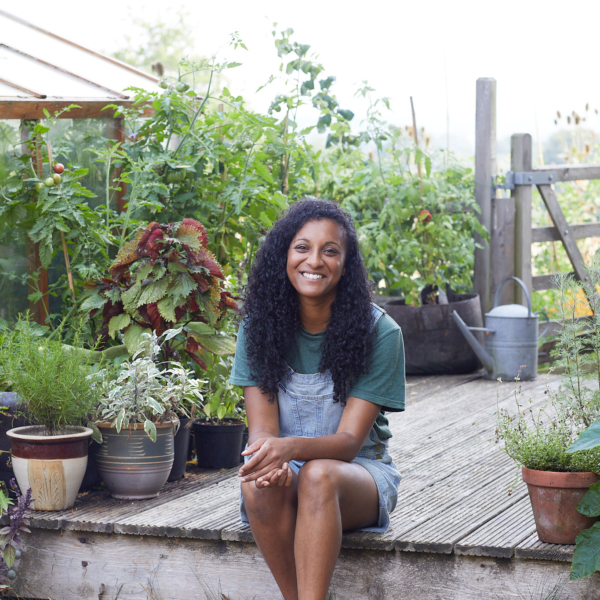If you ask someone to name a flower, chances are they’ll say a rose. One of the most sought-after and beautiful flowers to plant in the garden, growing a rose bush is practically a right of passage for a gardener. Read this guide to learn how to plant, care for, and use your rose bush. Soon enough, you’ll have your own rose garden!
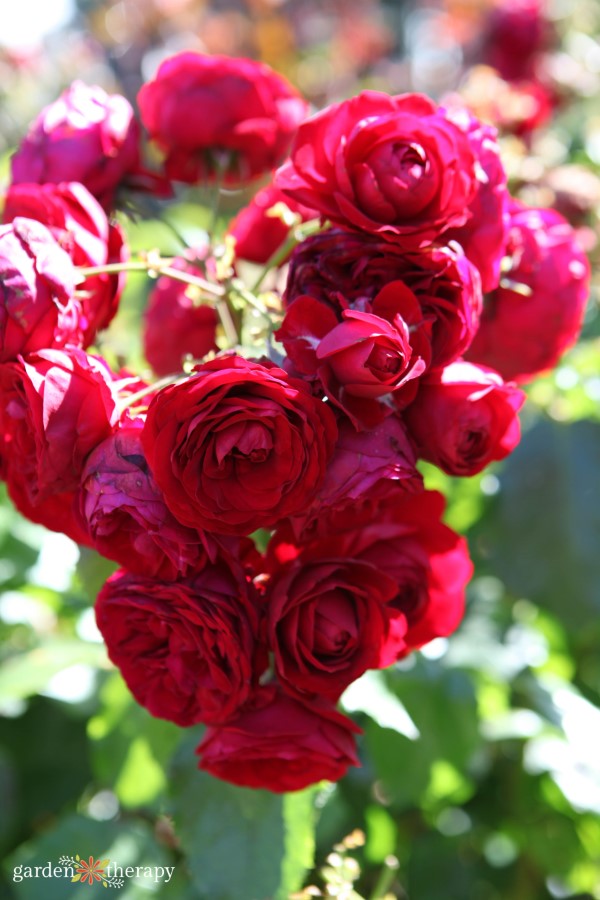
I have a confession…I’m not a big fan of roses. Coming from a gal whose last name is literally ROSE, I’m sure you’ll find this surprising. But the love for roses was just never there!
When I first moved to my current house, the back garden bed was nothing but a wall of roses and raspberries. I’m talking a 5-foot-tall wave of thorns! With thick gloves on hand, I ripped them all out and gave them away.
I transformed the garden into something else entirely. Now, you’ll find it the home to my wildlife pond and hopscotch steppingstones.
It wasn’t long before I regretted my decision to remove the roses. Along my healing journey, I learned all about the herbal properties of roses. And when I realized just how amazing they were besides their beauty, I fell in love.
Roses make for beautiful cut flowers, and they taste like delicate summer. They are extremely forgiving to grow and take well to hard pruning.
Amazing for the skin, I can’t harvest them fast enough. Whenever I head back to my original home of Alberta (known as Canada’s wild rose country), I make sure to gather some petals from wild roses and dry them. Once dried, they get featured in all my rose recipes.
But enough talk about the love of roses (for now!). If you’re here, it means I don’t have to do much convincing!
Jump ahead to…
Meet the Rose Bush
There truly is a rose for every occasion and person out there. With over 150 species and thousands of hybrids, roses have held their position as one of the world’s most beloved flowers. This isn’t a new thing, either. It is believed that the cultivation of roses began 5,000 years ago in China!
June’s birth flower, everyone has come to know red roses as a symbol of love and romance. However, roses come in nearly every colour, each of which has its own meaning. White roses represent purity and innocence, while yellow roses symbolize friendship and joy.

Of course, in the garden, we have our own way of classifying things. Most gardeners classify roses as one of the following:
- Heirloom roses: also known as old roses, heirloom roses refer to anything cultivated before 1867 (the arrival of the hybrid tea rose). These roses are lush, extremely fragrant, contain lots of petals, and are disease resistant.
- Modern hybrid roses: these roses are what you will find today, made from hybrids of tea roses. When you think of a rose, this is likely what you picture. Modern hybrids are very hardy, disease-resistant, and long-blooming. These roses tend not to have a strong scent.
- Wild roses: native to the northern hemisphere, you can easily find these roses in the wild. Extremely fragrant, they’re characterized by single blossoms of 5-petals. They bloom in early summer.
Most old and climbing roses bloom once a year in the spring. Some roses will have repeat blooms later in the season. Many modern roses, however, have been bred to bloom continuously throughout the summer.
While the famous saying encourages us to stop and smell the roses, not all roses smell. Some have a more old-fashioned smell while others are more modern. The best smell? Wild roses. The closer we stand by them, the better!
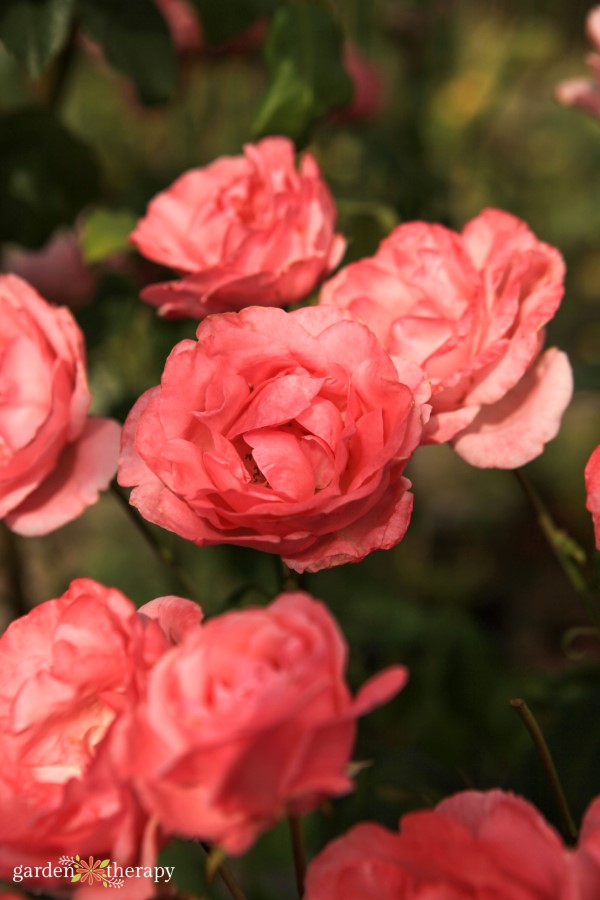
Rose Benefits
You may be surprised what this flower, known for its beauty, is capable of! Roses used to be grown more for medicinal and culinary uses (yes, they’re edible) rather than for their beauty.
In my opinion, roses are best used for skin care. Full of natural oils, roses help moisturize and even your skin tone. The anti-inflammatory properties reduce redness and puffiness around the face. As a natural astringent, it also has antibacterial properties, making it good for clearing out acne-causing bacteria.
The astringent qualities and antioxidants also help to support skin tissue. This makes rose a helpful sidekick in combatting fine lines and wrinkles! You can also fight age spots and discoloration with roses. Rosehip oil especially aids with this.
Speaking of rose hips, this is the rose plant’s seed pod. Just like the flower, the rose hip has plenty of benefits to offer. Rose hips have high levels of Vitamin C—even more than oranges.
They’re also rich in Vitamins A, B complex, C, E, and K and contain calcium, silica, iron, and phosphorus. You’ll find them packed with plenty of antioxidants, particularly bioflavonoids, which strengthen heart and blood vessels.
You’ll notice how much the wildlife enjoys feasting on rose hips. You can also feed them to chickens, horses, dogs, and wild birds for a treat!
Selecting a Rose Bush
When it comes to selecting a rose bush, you have two options: potted roses or bare-root roses. Potted roses are great for beginners. They’re available at every garden centre and can be found throughout the season. Potted roses are easy to plant and establish quickly.
Bare-root roses look like a bunch of dead sticks when they first show up. Don’t fear! These rose bushes are still dormant and haven’t leafed out yet. With bare-foot roses, you tend to have more selection and varieties to choose from. For those who want lots of roses, they’re also more economical. They just need a little more work before planting.
Both options will offer plenty of varieties and different sizes, colours, and types of blooms. Research your specific variety before planting.
Planting a Rose Bush
When you get your bare-root roses, plant them right away. They’re often available and shipped in early spring while they’re still dormant. Plant them by late spring to get the best results. As long as potted roses are well watered, they can be planted anytime. Early spring after the last frost or in fall, six weeks before the first frost, is best.
If you’re planting bare-root roses, soak them in a bucket of water for 8-12 hours before planting. Prune back the roses so that each cane (main branch) has 3-5 offshoots.
In the meantime, scout out your rose bush location. Roses like full sun and well-draining soil. Planting by a house, fence, or structure can protect roses in cold climates. Be careful not to crowd roses and ensure they have enough room to reach full maturity.
When planting, wear thick gloves to protect yourself from those nasty thorns. Dig a hole twice the size of the container or roots. Mix in compost. If planting from a container, “tickle” the roots before planting and filling the hole.
Give the plants a good soaking after planting, and you’re all done.

How to Care for Roses
Now that you’ve got roses in the ground, here is everything you need to do regarding rose bush care to keep your roses blooming nonstop!
Soil
Roses may be thirsty plants, but they want soil that drains well. Ensure soil has adequate drainage but also that it can retain moisture long enough for the roots to enjoy it. Overall, they like loose and loamy soil. You can achieve this by adding soil amendments to your already planted roses.
In an ideal soil world, roses would prefer slightly acidic soil. 6.5 is just right. You can easily perform an at-home soil pH test if you don’t know the acidity of your soil.
Water
New rose bushes need frequent watering. When watering, be sure to soak all the roots. Less frequent, heavy waterings are better than less frequent shallow waterings. Remember to water at the base of the plant to avoid any water fungal diseases.
Those in dry summers may need to water their roses more often to protect them from the heat. A layer of mulch around the base of the rose can help to conserve water. It also helps to overwinter the rose bush in the fall.
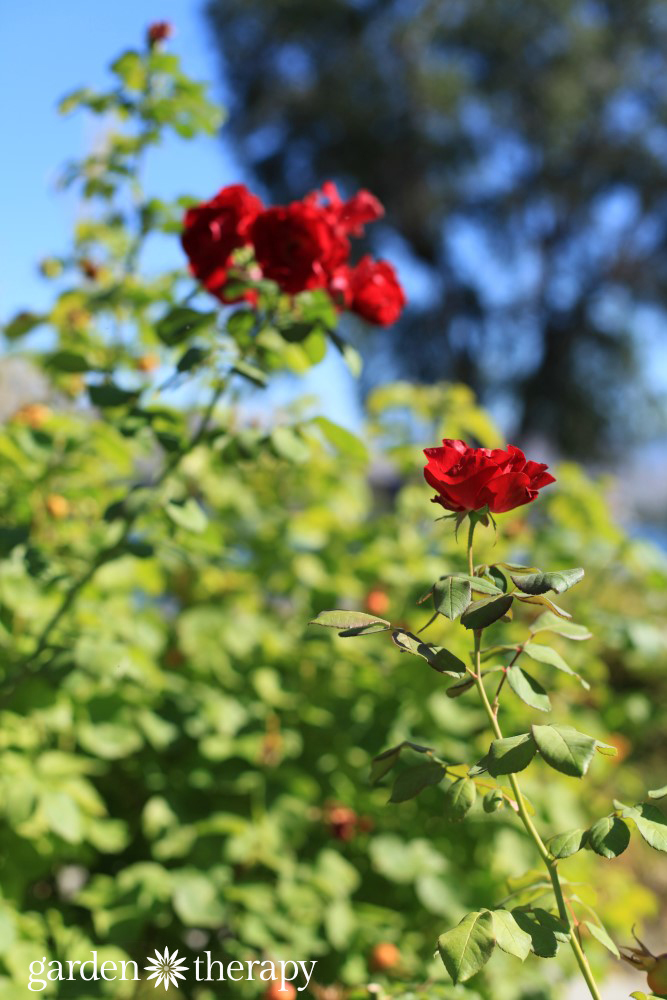
Sunlight
If you can, place your rose bush somewhere that receives morning sun. This burst of sunshine in the morning will help to dry the morning dew on the leaves and prevent diseases.
Rose bushes need at least six hours of sun a day. Six to eight hours is the golden zone. Roses planted in the partial sun may weaken over time and produce fewer blooms.
In hot climates, you may want to place your rose bush somewhere sheltered from the hot afternoon sun.
Prune
Roses take extremely well to pruning. I’ve seen old and struggling rose bushes come back to life the next season after heavy pruning. If you do choose to heavily prune your rose bush, do so in the spring, just when the plant begins to wake up and leaf out. Don’t worry; the blooms come later in the season.
Don’t prune too hard in the autumn, as this can damage the rose and affect its ability to overwinter. Feel free to prune lightly during the summer, though never during intense heat. Don’t hesitate to clean up old or diseased branches.
Some roses also benefit from deadheading. Once a week, remove spent flowers by cutting them back to the nearest leaf. Be sure to leave some roses behind later in the season so you can enjoy some rosehips.
Other types of roses are self-cleaning and won’t develop rose hips. These blooms drop off automatically.
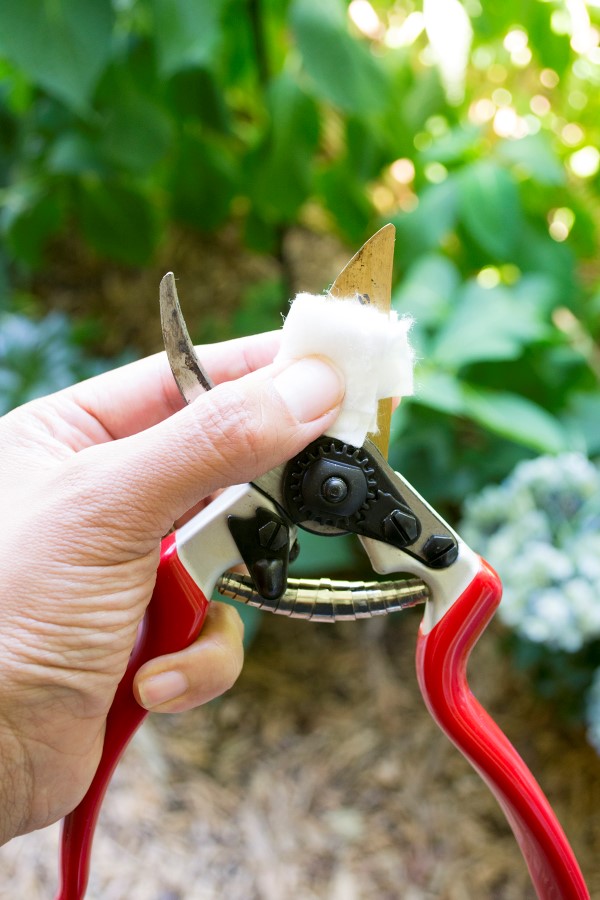
Pests and Diseases
While most roses are bred to be disease-resistant, that doesn’t mean they’re entirely in the clear. Roses are often affected by powdery mildew. This fungal disease appears as a light grey or white cast on the leaves. It thrives in warmth and humidity.
Roses can also be affected by black spot, a fungal disease with black or brown spots on top of the leaves. You may also see botrytis blight, which is a grey fungus that causes the blooms to drop or turn brown.
The best way to avoid disease?
- Remove dead leaves and branches.
- Space out your roses for proper air circulation.
- Avoid getting the leaves wet by watering the rose at the base.
Rose bushes may also be infested by aphids, Japanese beetles, and spider mites. Deer also enjoy munching on the scrumptious buds, so try planting them in a deer-safe area whenever possible or use a strong companion herb such as lavender to hide the smell.
Things to Do With Roses
Besides enjoying these beauties in your garden, here is what you can do with the blooms.
Make Rose Water
If you want to reap the glorious benefits of roses for your skin, it all starts with rose water. Not only can you drink it, but you can use it as a toner, a makeup remover, in the bath, as an air freshener, in baked goods, and so much more.
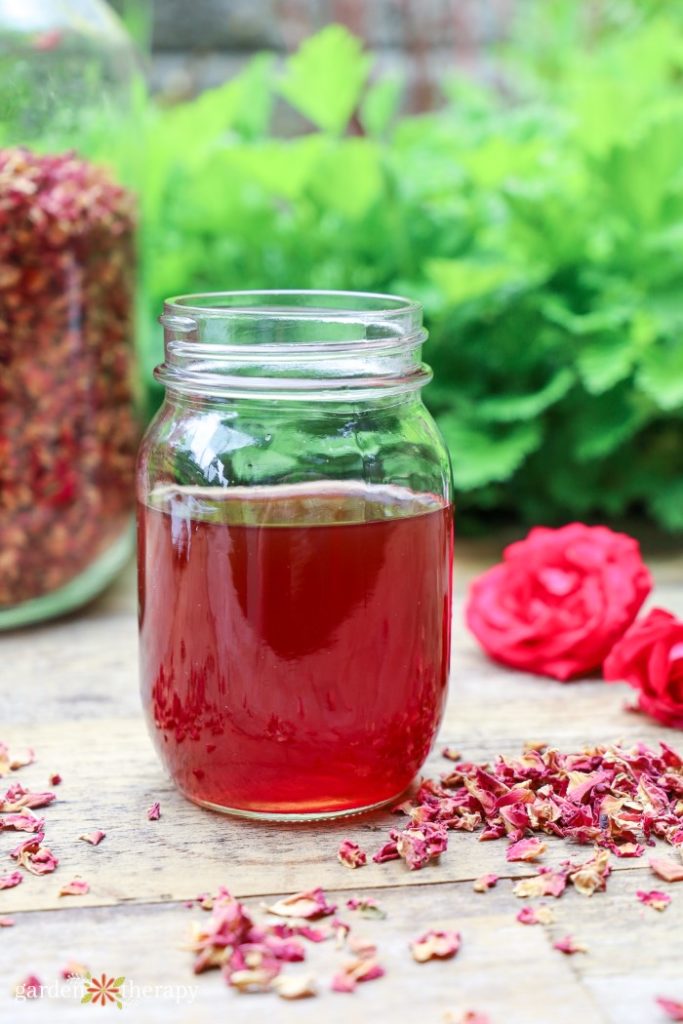
Rose Face Toner
Toner is such an important part of a skincare routine, and it often gets skipped. Helping to balance the pH of your skin, this rose toner gives you an extra boost after washing your face.
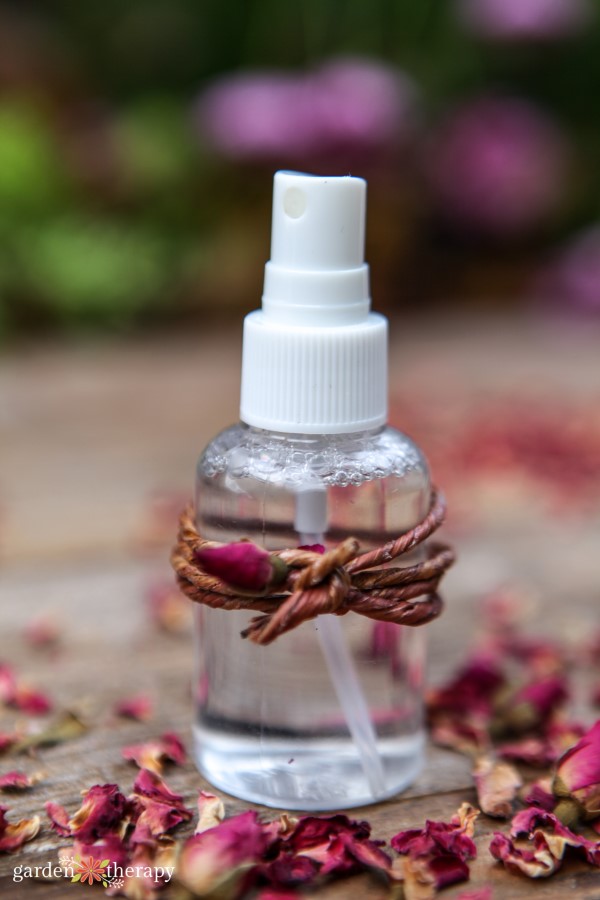
Beeswax Massage Balm With Rose
There’s no denying the romantic and sweet scent of rose. Use it to your advantage and also apply the benefits of rose to the skin with a batch of this beeswax massage balm with rose.
Rose Petal Bath Bombs
Keeping up with the love and romance, you can use rose petals to add some ambience to the bath. These rose petal bath bombs are also infused with rose essential oil for some extra aromatherapy.

Rose Face Cream
One of my go-to lotion recipes, this rose face cream is nice and light on the skin. It hydrates my dry, sensitive skin without causing any clogging. I may have to give this face cream credit for my youthful appearance!
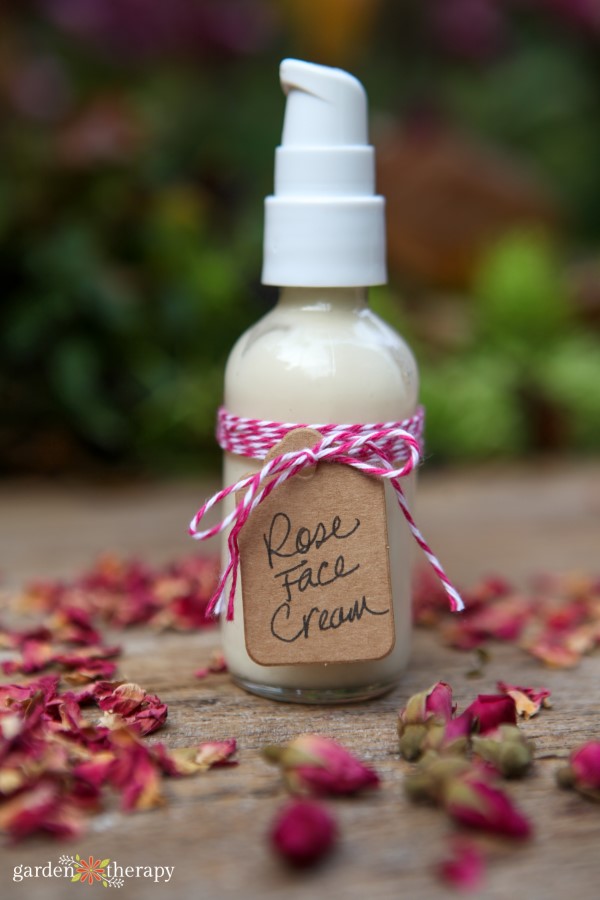
Rose and Lavender Deodorant Spray
Put the scent of rose to the test with this natural rose deodorant spray. I’m highly against putting anything I can’t pronounce on my skin, even when it comes to the armpit! Honestly, don’t underestimate the confidence of having rose-scented armpits.
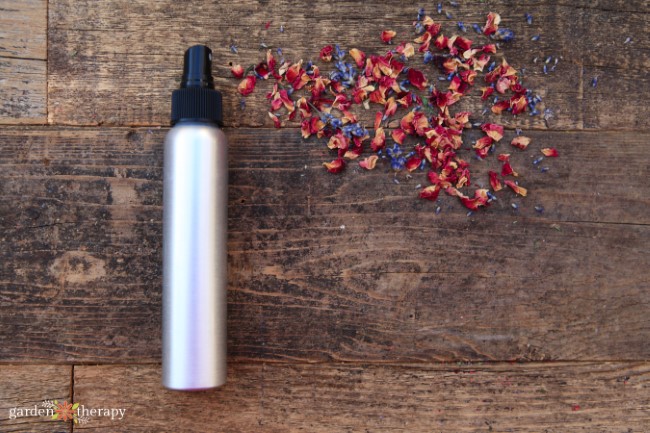
Rose Hip Tea
One of the best ways to harness all the goodness from rose hips is by brewing tea. Harvest them fresh from your garden and get a steamy cup moments later.
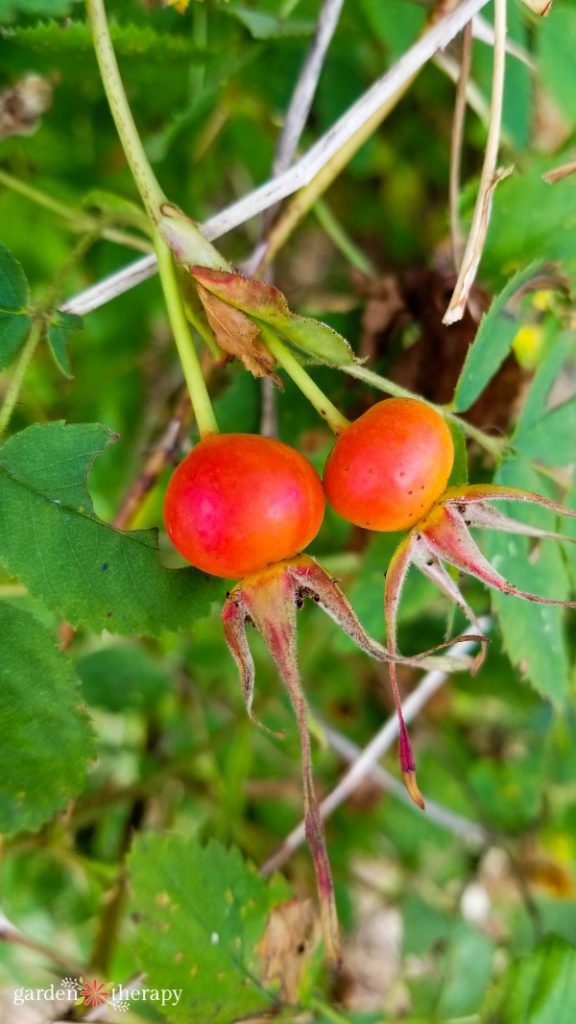
Frequently Asked Questions About Rose Bushes
What is the best month to plant roses?
Roses should ideally be planted in the spring after the last frost or in the fall six weeks before the first frost.
If planting bare-root roses, you will want to plant them as soon as you get them (after soaking). With potted roses, you have a little more time to get them in the ground as long as they stay hydrated.
Do roses like sun or shade?
Roses are sun-loving flowers. They prefer 6-8 hours of sunlight a day. This will get you more blooms and a healthier, stronger plant. If you live in a hot climate, protect the roses from the hot afternoon sun in their location.
How do I pick roses?
Roses are one of the most popular cut flowers around. Roses are best picked immediately after the bud stage when the flowers are just beginning to open. Harvest roses in the morning after the dew has dried so they’re hydrated and not under any heat stress.
Before getting started, wear gloves to protect yourself from the thorns. With sterilized pruners, cut the rose at a node (where the leaf meets the stem).
Before placing them in a vase, recut the ends to eliminate any air bubbles. Cut at an angle. Remove any leaves that would go under any water, as this leads to bacteria. If you want, you can also remove the thorns using a rose stripper or by cutting the thorns with a pruner. Change the vase water every other day.

